When cars get to their mid-life point, manufacturers give them a tart-up front and rear and might be kind enough to throw somes extras in as well. That’s the stuff they tell you about, but they often take the opportunity to make running changes, fixing minor (or major) problems that have cropped up along the way. It’s why facelift models are always good second-hand purchases as initial problems have usually been sorted. And two five-door hatches have just been recycled recently, the Honda Civic and Subaru’s Impreza.
These guys fall into our $30-45k class category. Impreza is a standout value pick in this class and offers one mid-spec model at a great price. The Civic has three variants; a base model with a 1.8-litre engine and the turbocharged Sport and RS models. The RS adds some racier suspension and wheels, and the bodykit, while the Sport gets sat nav, a sunroof, rides on smaller 17s and is a tad more conservative on the eyes but each costs $41,990. Both Civic and Impreza are five-door hatches of a similar size, but that’s where similarities end. One drives the front wheels, the other is AWD, one uses a 1.5-litre turbo, the other a naturally aspirated 2.0-litre. And one is $31,490, the other $41,990. There are some specification differences between them, but the price puts the ball in the cheaper Impreza’s court as we like value around here. But then we also lean towards vehicles that drive with a certain verve, and the Honda Civic RS was a previous $30-45k class winner a few years back. So which is the better buy when everything is taken into account?
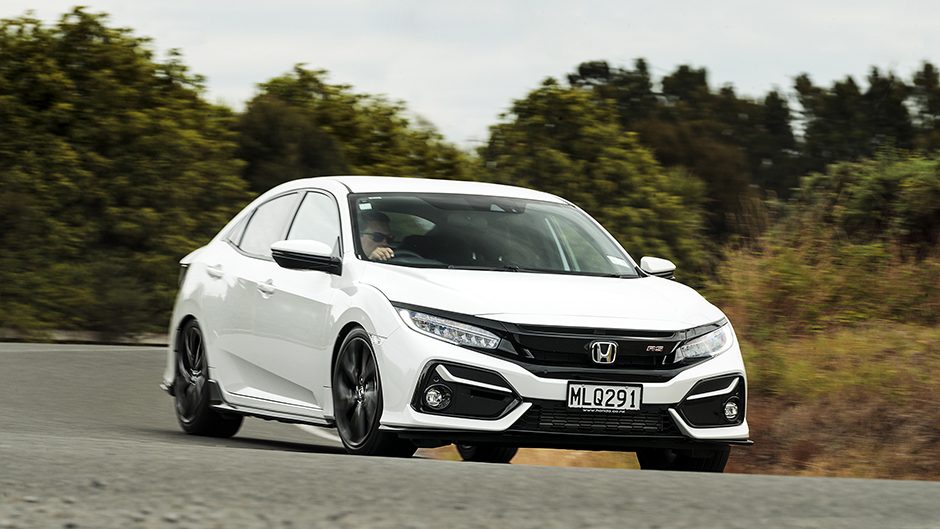
The updates
Honda has revised the bumpers on the RS, there’s a ‘wing’ grille design and the rear diffuser and 18s are new. The firm’s Sensing active safety tech has been added which includes lane departure warning and lane keeping, adaptive cruise, AEB, road departure mitigation and auto headlight dipping.
Updates inside are minor with a few buttons added to improve operation. The price remains at $41,990.
There’s not much of a story for the Impreza, with new front end styling and wheels, and the addition of SI drive modes. Subaru would say it was already well stocked but the price has risen to $31,490 now, whereas it started life as a sub-$30k machine. But as Simon Bridges will tell you, this Government is driving the cost of living up for everyone, so blame them.
There are no mechanical changes. The Honda’s 1.5 turbo makes 127kW with 220Nm streaming from 1700-5500rpm. The RS is rated at 6.4L/100km. The 2.0-litre Impreza gets by on 115kW and manages 196Nm at 4000rpm while returning a quoted 6.6L/100km. Both use a CVT, the Honda’s driving the front wheels, the Impreza with permanent AWD.
Styling wise, these two couldn’t be more different. The Civic is racy, styled for those that dreamed of owning that Civic Si from the Fast and Furious. The Impreza looks unremarkable next to it but some will find that preferable.
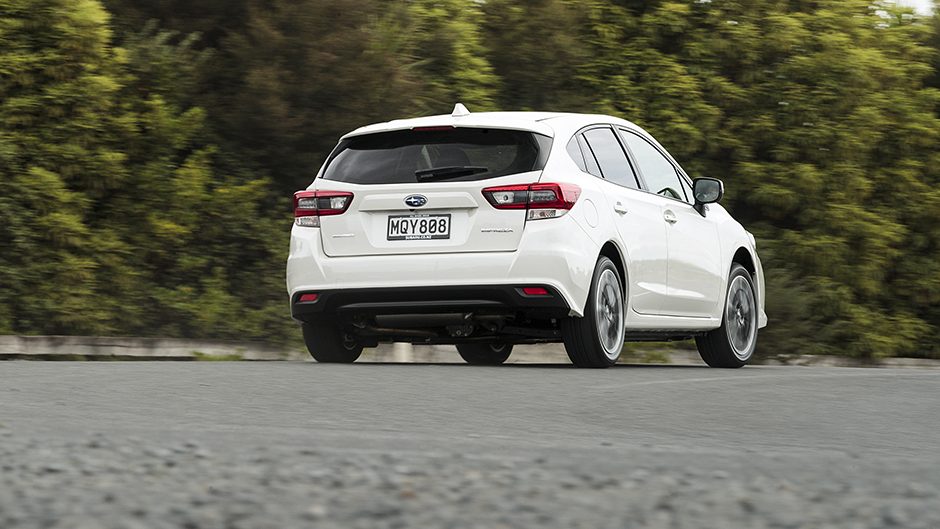
The day-to-day
Accompanying the look, the Civic RS has more sport to its progress, revealing more of the tarmac turbulence below, and the racier Michelin rubber can sound off. The Impreza has a more compliant ride, soothing the bumps more effectively.
The Civic’s 1.5 turbo delivers a heap more low-end torque though, being stronger in the 1500-3000rpm zone for easier progress. The Impreza’s 2.0-litre simply can’t match it for low-end ease. You tend to use more throttle, and hit the S button to access a more responsive drive mode. It sees the Impreza use more gas as a result, the trip computer hovering around 8.5L/100km in the Honda, and 9.0 in the Impreza for a mix of city/motorway/backroad driving.
The Impreza has the better glasshouse and mirrors for superior all-round vision while there’s not much in it for turnarounds, but the Civic has a faster rack, meaning less arm work to complete manoeuvres.
Both have lane keeping and adaptive cruise functions, the latter more useful than the former. While the Civic’s cruise system won’t keep your speed in check on descents, it is better at negotiating its way past turning traffic ahead. You need to give them a wide berth in the Impreza or the system will drag you down to a halt. Neither has a blind spot minder but Honda has its lane watch camera displaying the road alongside on the central screen to help with lane changes to the left, and checking for things like speeding cyclists zooming up on the inside as they ride like they own the road.
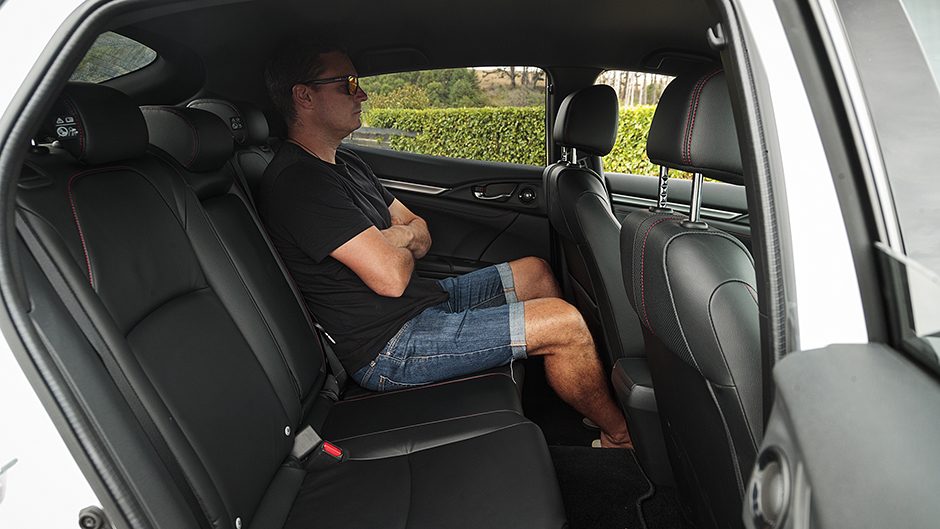
Dynamically different
The Impreza does without any sporting aspirations. It favours ride and refinement, and always feels stable and glides well. It’s like a big car in that regard, but still displays small car nimbleness on the go. It turns sweetly, the steering well tuned for assistance and feedback, though there’s a dose of roll to proceedings, which leads to understeer eventually. Traction is well sorted, the AWD is almost overkill on a dry road, but those that tread over gravel often, or live in wetter regions will certainly appreciate the added stick when it’s required. S mode gives the powertrain a dash of verve, the CVT responding to a heap of throttle by slipping down its belt quickly, whipping the engine along, and it’ll rev to about 6000rpm where it does a faux change. It’s not a powerhouse, so go easy with the dodgy overtaking moves.
The Civic lives up to its badge in the realm of warm hatches. With more zoom in its stride, the RS spec suspension works well, and can iron out some pretty nasty bumps while maintaining a sterner control on the roll and pitch. It’s noisier on road but turns with more immediacy and sticks to the line more sternly with its wide Pilot Sport rubber. There’s better drive off the bends too, the turbo spitting out more power, the flow well managed by the trans in its S mode. If you want a drive with reasonable dynamism without going all out on a hot hatch, this will suit.
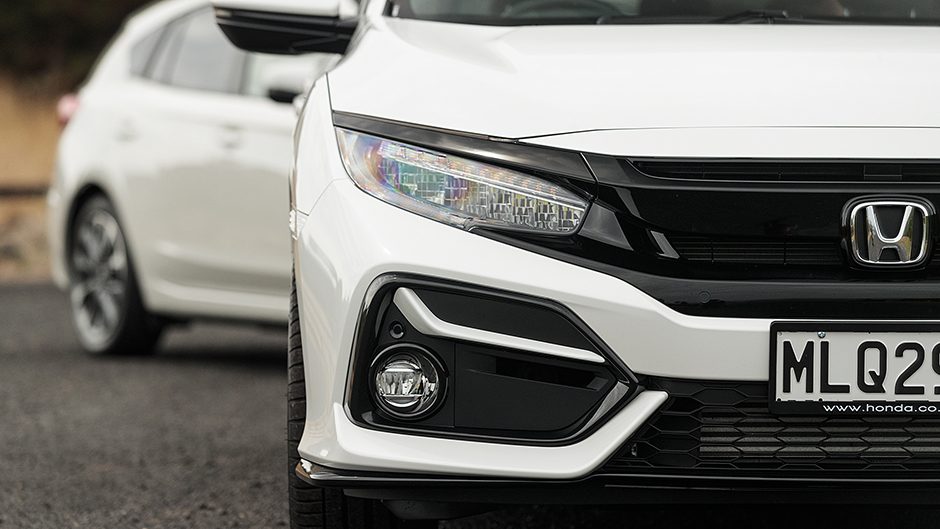
To practicalities
You sit on cloth trim in the Impreza, and though the seat is comfy, adjustments are a DIY procedure. We prefer the design of the Subaru interior, as it feels more spacious up front with less hard plastic. Some of the controls pertaining to the info screens are a little confusing, as is the location of a few of the active safety buttons, which seem scattered everywhere.
You can feel hemmed in at the wheel of the Civic with its higher set console and the seat is narrower but it comes clad in leather, is heated and powered. It has better storage with a huge centre bin and a handy solution to help plug your phone in and keep the cords tidy. A few new buttons ease operation of the infotainment system which still isn’t the greatest. Civic has a few bits lacking in the Impreza, like auto lights and wipers but both get smart keys and smartphone integration to make up for a lack of hardwired nav.
Both also offer good space in the rear, the Civic with no lack of headroom despite a racier roofline. In the boot, the Honda has a slightly larger floor area but also a more rakish tailgate which eats into the overall load space.
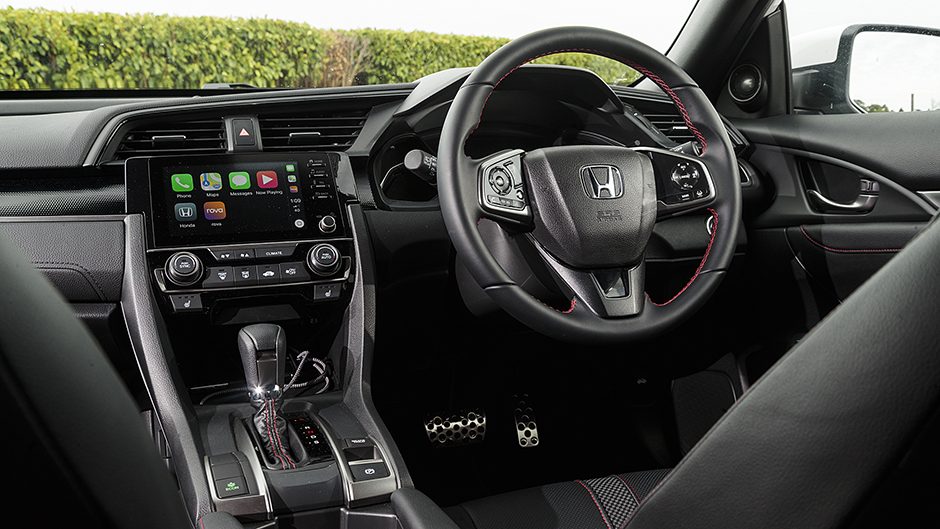
Which one then?
The Impreza is hard to go past if you are after a practical, well specified hatch that offers more space than a top-spec small car for similar money. And AWD in colder, wetter regions will prove beneficial. The Civic is the better drive, and we prefer its powertrain but its $10k premium is a bit much of a stretch.
| Model | Honda Civic RS Sport Sensing | Price | $41,990 |
| Engine | 1496cc, IL4, T.DI, 127kW/220Nm | Drivetrain | CVT, FWD |
| Fuel Use | 6.4L/100km | C02 Output | 148g/km |
| 0-100km/h | 7.50 sec | Weight | 1332kg |
| Model | Subaru Impreza 2.0 Sport | Price | $31,490 |
| Engine | 1995cc, flat 4, DI, 115kW/196Nm | Drivetrain | CVT, AWD |
| Fuel Use | 6.6L/100km | C02 Output | 152g/km |
| 0-100km/h | 10.15 sec | Weight | 1384kg |


